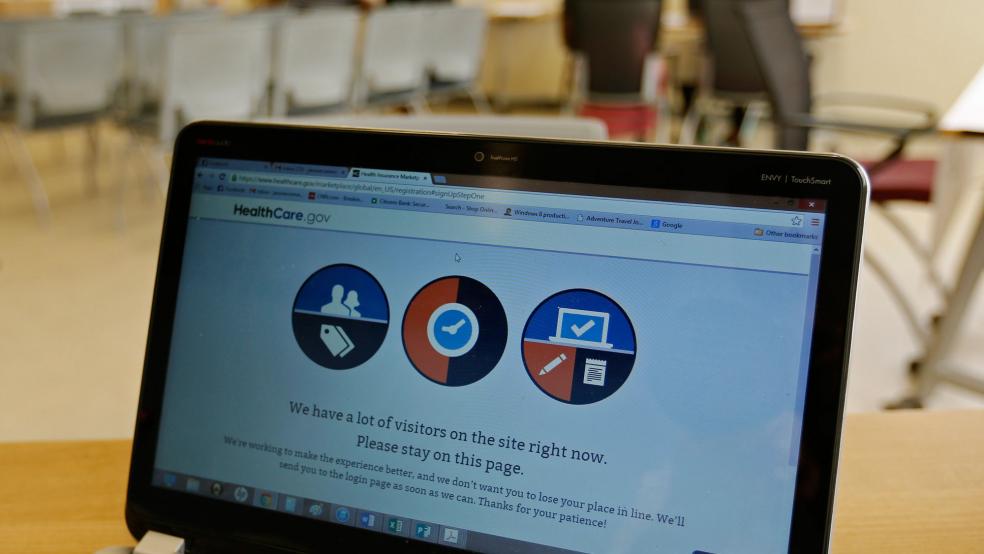Though Obamacare’s biggest problem right now is a Supreme Court case that threatens the presidents subsidized health care law, federal auditors are calling attention to another problem that could present even more challenges down the road—and that’s the functionality HealthCare.gov.
The federal website has vastly improved over its nightmarish debut in the fall of 2013, when tech troubles nearly paralyzed the system and prevented people from signing up. On day one, only six people were able to successfully complete applications.
Related: Obamacare Arguments Leave More Questions Than Answers
However, a review of the website and its massive repair effort by the Government Accountability Office released this week, reveal there are still plenty of issues, both tech-related and managerial, that continue to disrupt the massive system that services millions of people living in 34 states that did not create their own exchanges.
As of last fall, the federal government had poured more than $2.1 billion in the federal exchange, which includes both IT-related costs as well as administrative and outreach expenses. Still, even after spending all of this money building and then repairing the site, auditors found that it wasn’t able to experience high-traffic numbers—a finding that was evident in the final days of this year’s open enrollment period when glitches took over the website and prevented people from getting through the application process.
Those issues were resolved before the end of open enrollment period, and the administration gave people who had problems extra time to complete their applications. However, it still created inconvenience for consumers and should have been better prepared.
GAO also revisited the site’s launch in 2013, saying that the site was riddled with coding errors and did not have adequate testing or effective oversight, in line with previous reports.
Related: Doh! Obamacare Website Botches Subsidies for 800,000
Auditors concluded that though HealthCare.gov is looking much better than it was a year ago, “weaknesses remain.”
Weaknesses, indeed. As Politico reported last month, the website’s back end isn’t even fully completed.
That’s right, although the front-end of the site is entirely functional and for the most part glitch free, the site’s back end, which is supposed to connect with health insurers to verify consumers, isn’t even finished.
Though insurers have been able to use workarounds to verify their customers while they wait for the website to be fully functioning, the process has been time consuming and not at all what was expected when they first signed on to join the exchange.
When the website launched in 2013, officials said just 40 percent of the back end had been completed. At the time, officials justified the delay, saying their priority was to get the front end perfected before the open enrollment period began—since that’s what the consumers use. It’s unclear how much work they have left to do until it’s fully functioning.
Related: How Obamacare Rates with Consumers One Year Later
Issues with the site and the incomplete back end are now starting to affect some customers too. Last month, the administration reported that the website had sent 800,000 enrollees on the federal exchange the wrong tax information due to a “coding error.” They said the mix-up could affect the amount of federal subsidies consumers received to put toward their health coverage.
Some people accidentally received too much, while others received too little. Officials said they were working on rectifying the problem and that people who received too much money would not be expected to return it.
At a congressional hearing last week, HHS’s Kevin Counihan addressed the website’s issues.
"The Marketplace is currently supporting more than 8 million consumers, 50 states and the District of Columbia, hundreds of health plans and interactions with other trusted partners that allow us to verify eligibility,” Counihan said. “Our priority in 2015 is completing our payment systems that allow for the calculation of policy level payments and of the premium stabilization payments, which we are beginning to test with issuers. Over the next couple of years, we will continue to improve the efficiency of the Marketplace.”
The GAO report comes a day after the Supreme Court heard oral arguments in the latest challenge to the president’s health care law.
Top Reads from The Fiscal Times:





